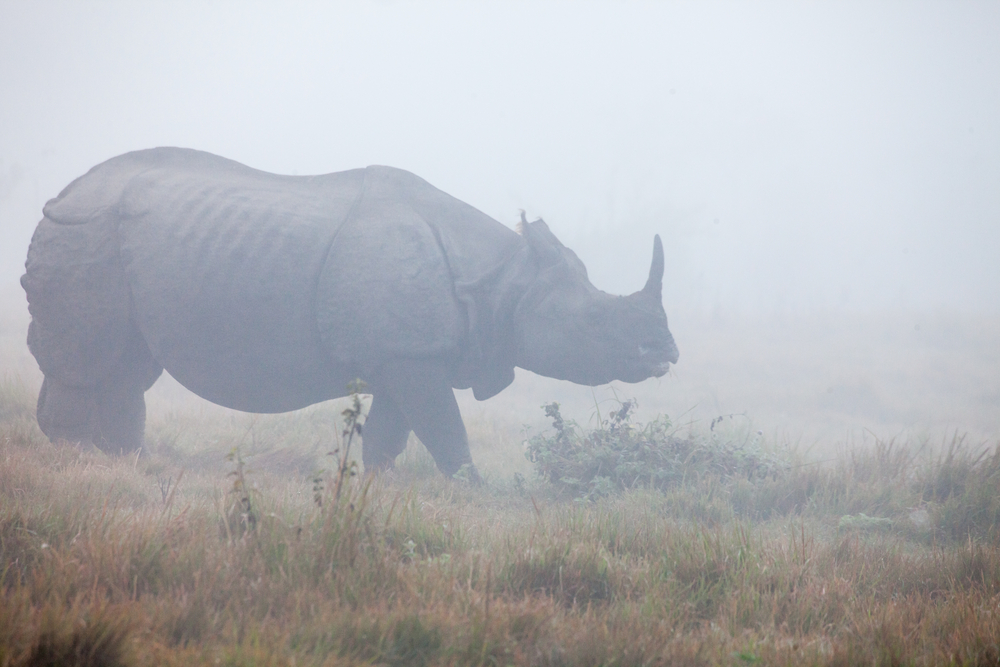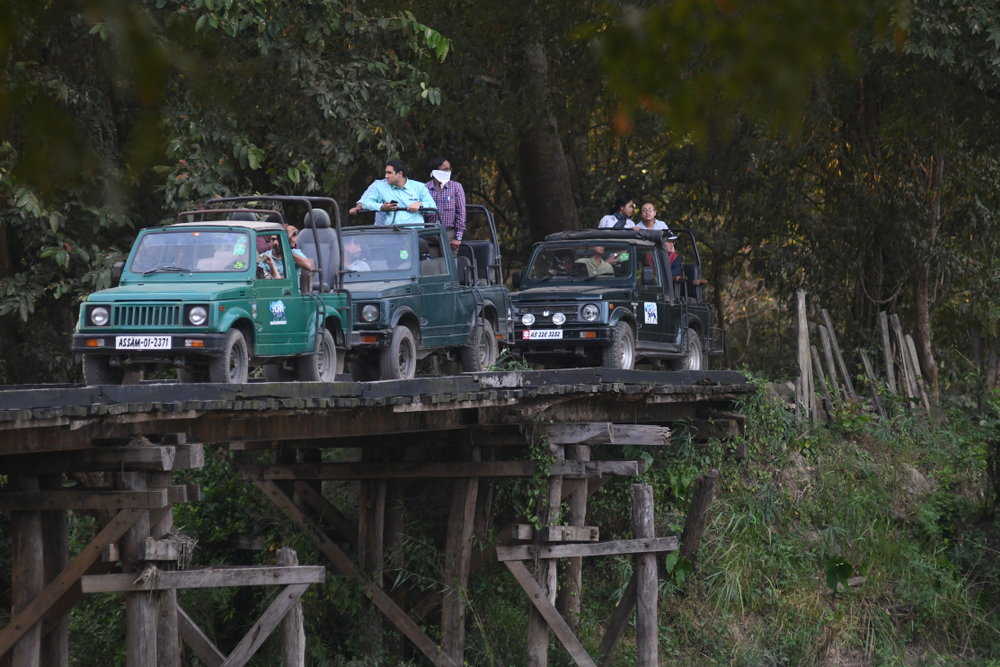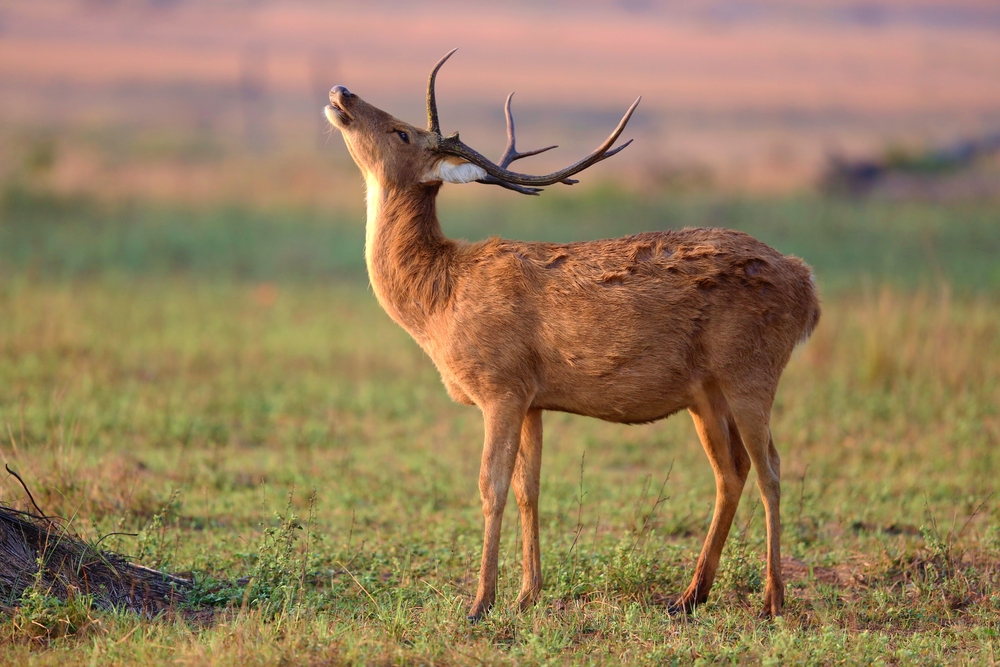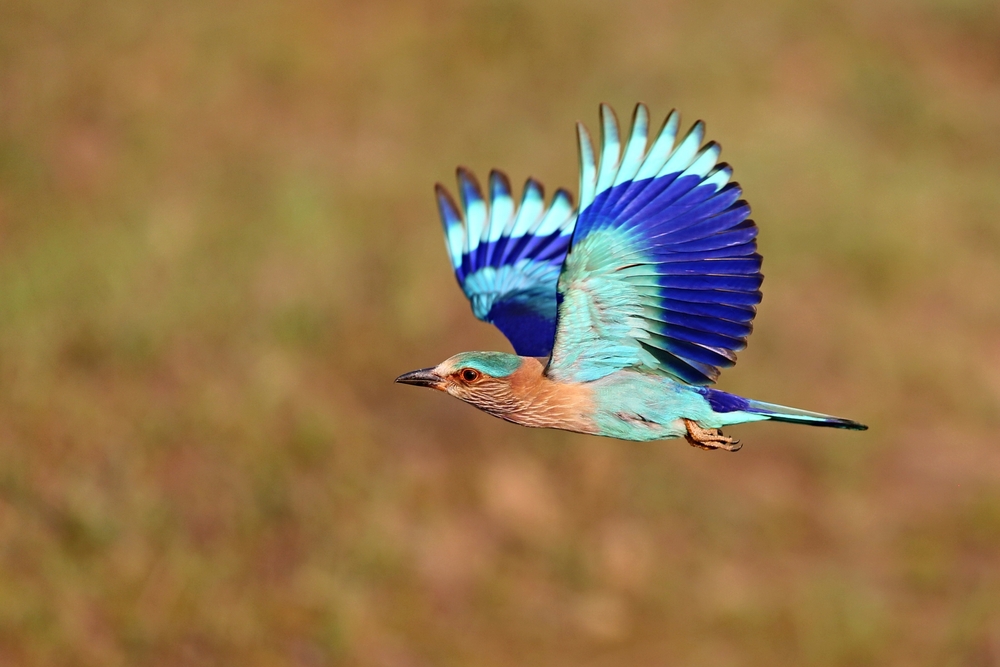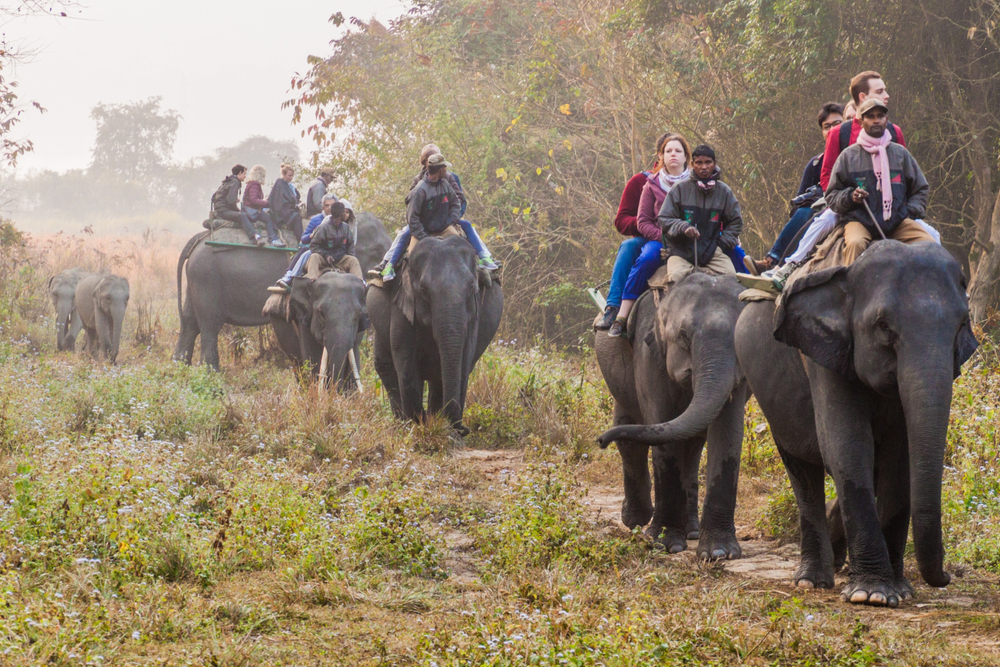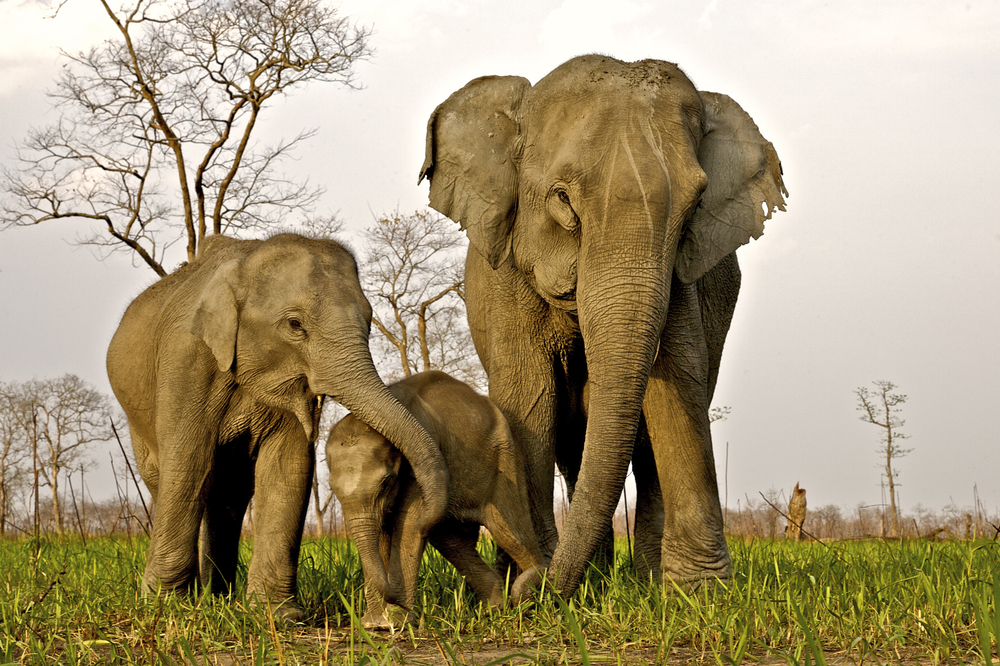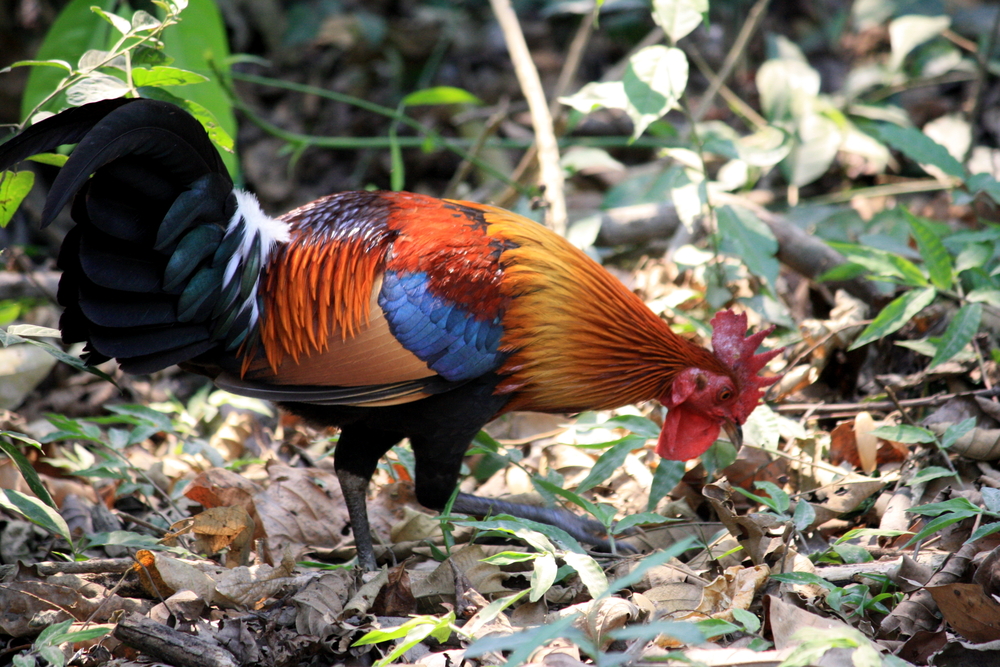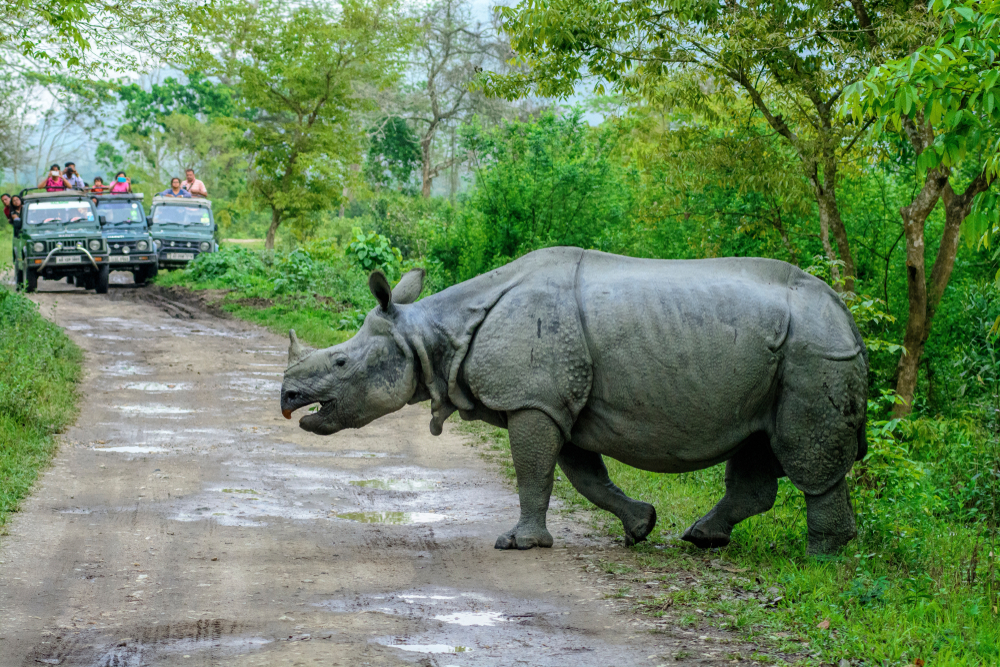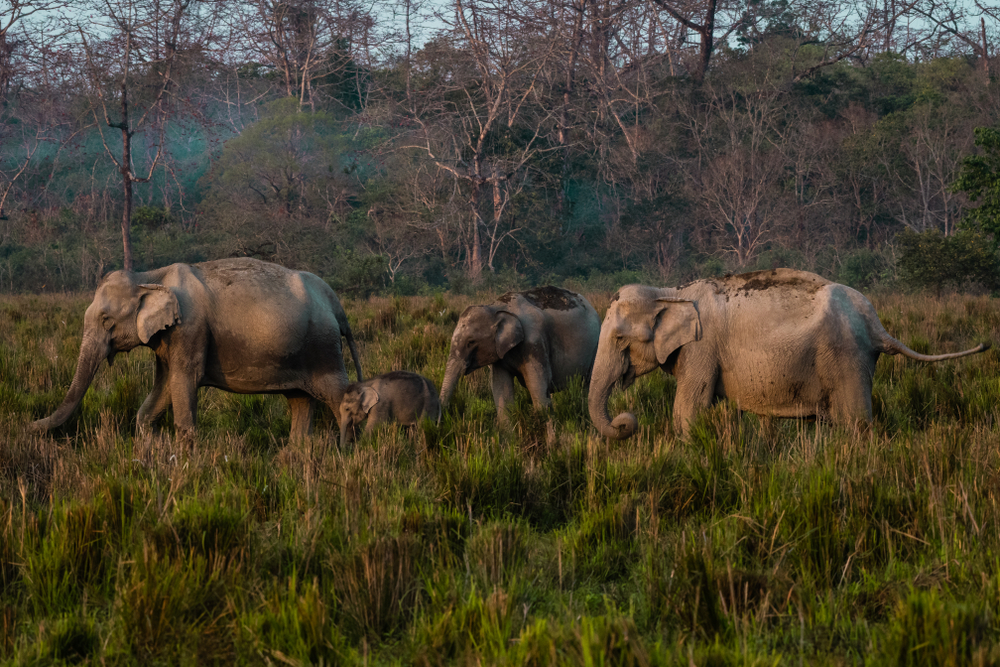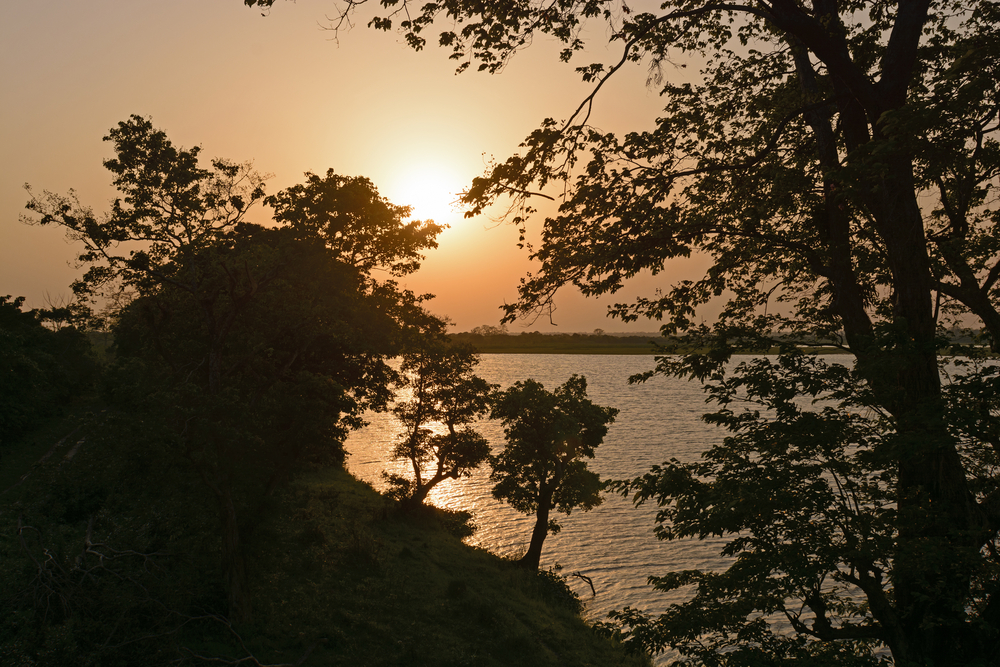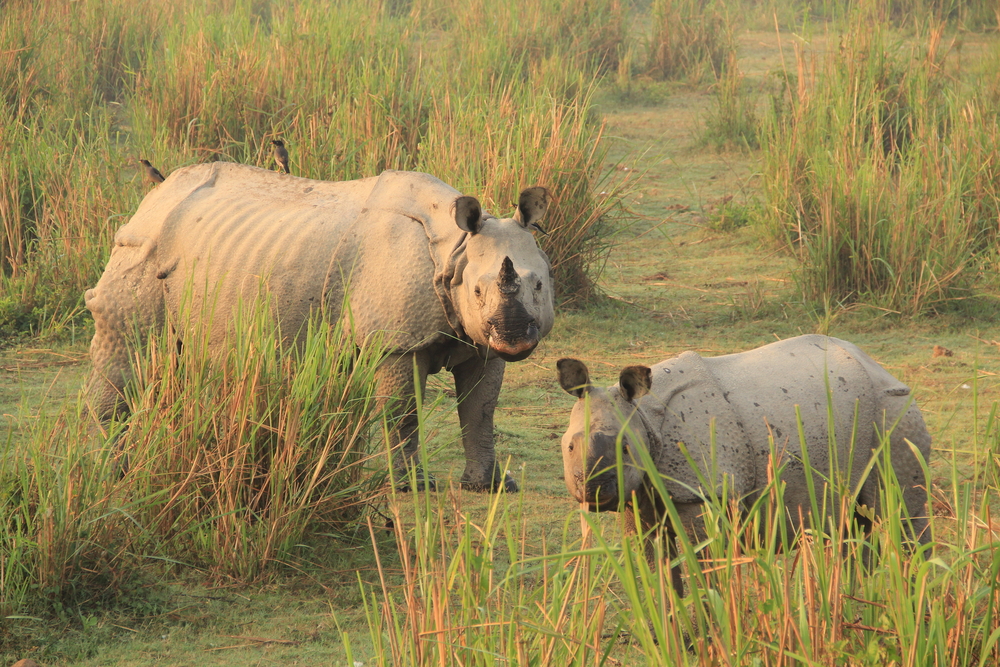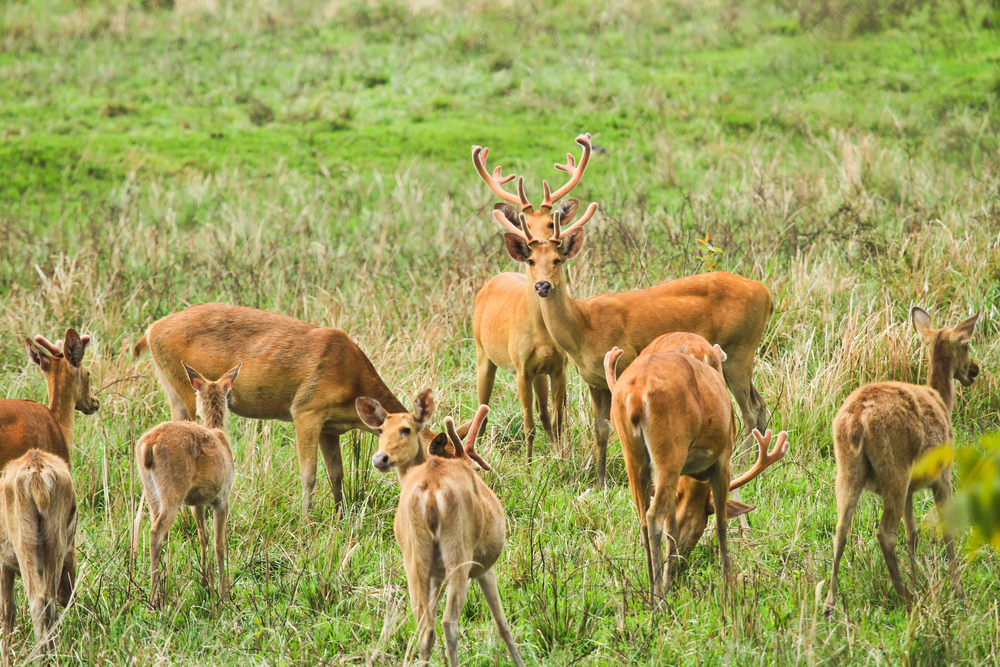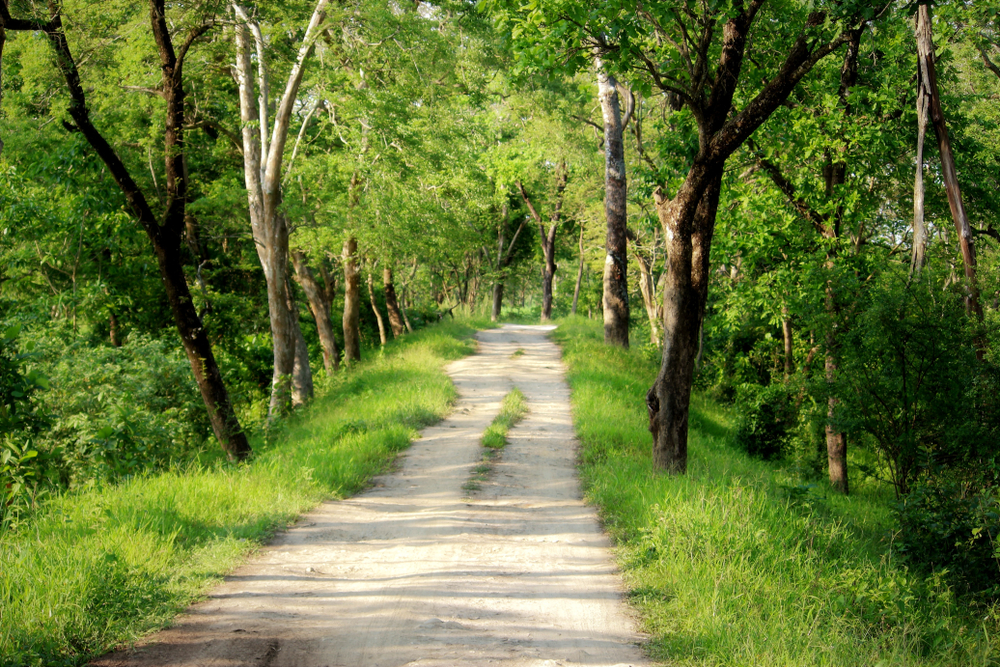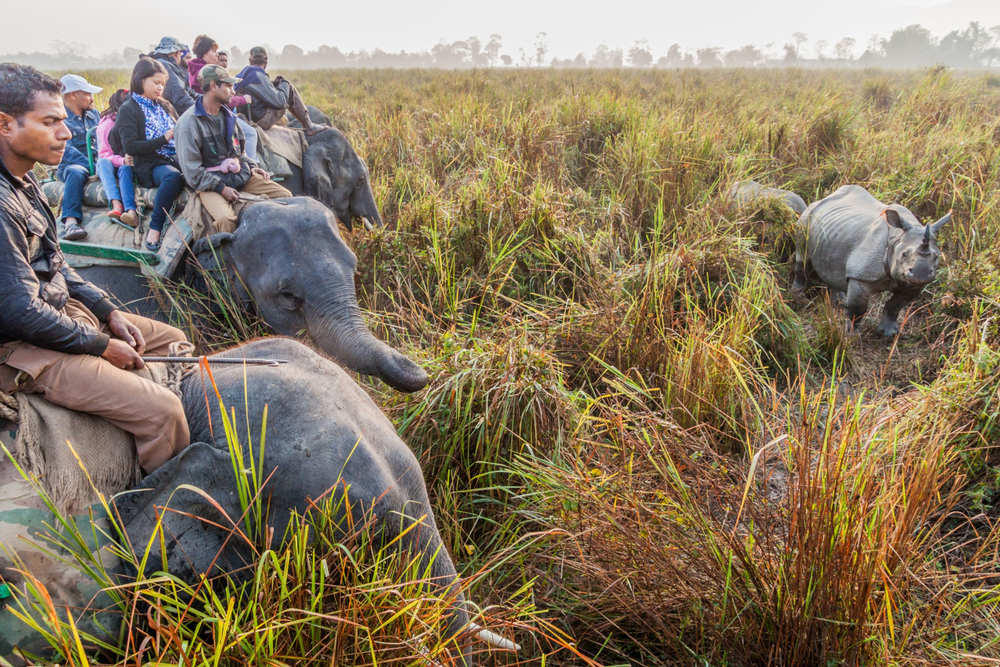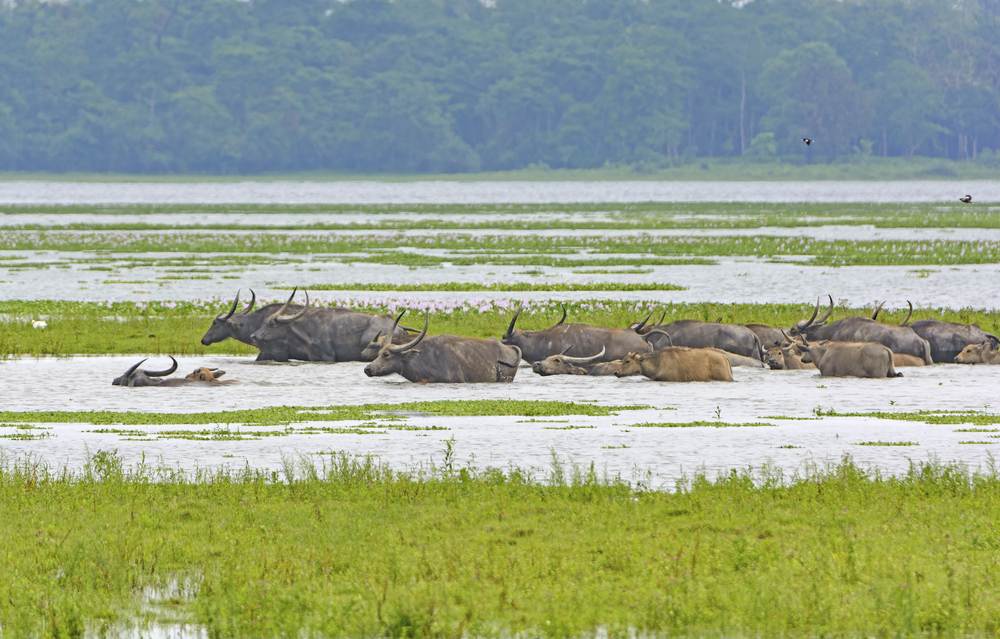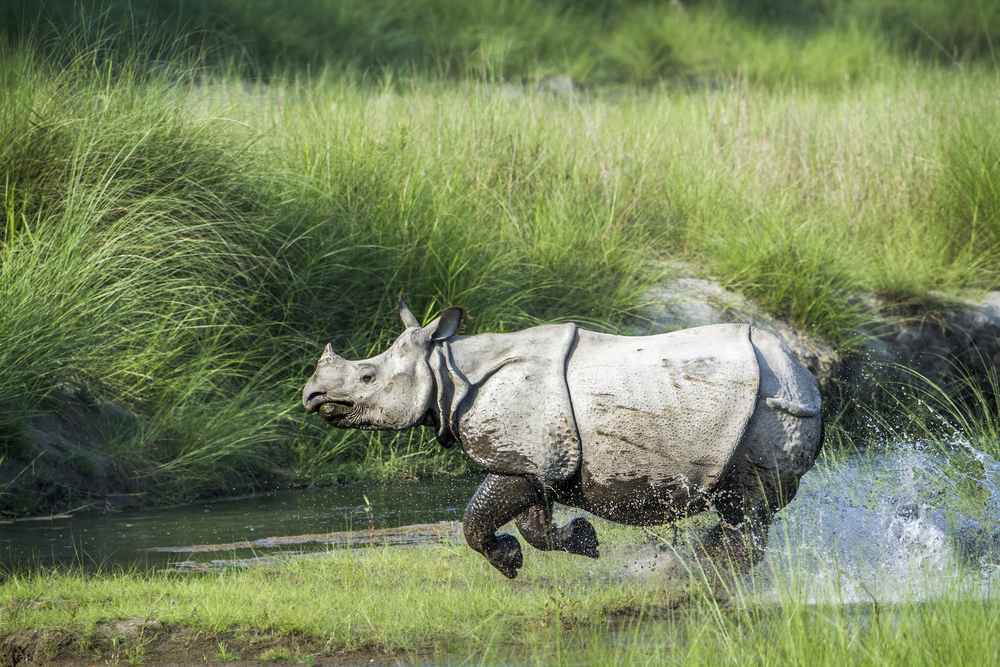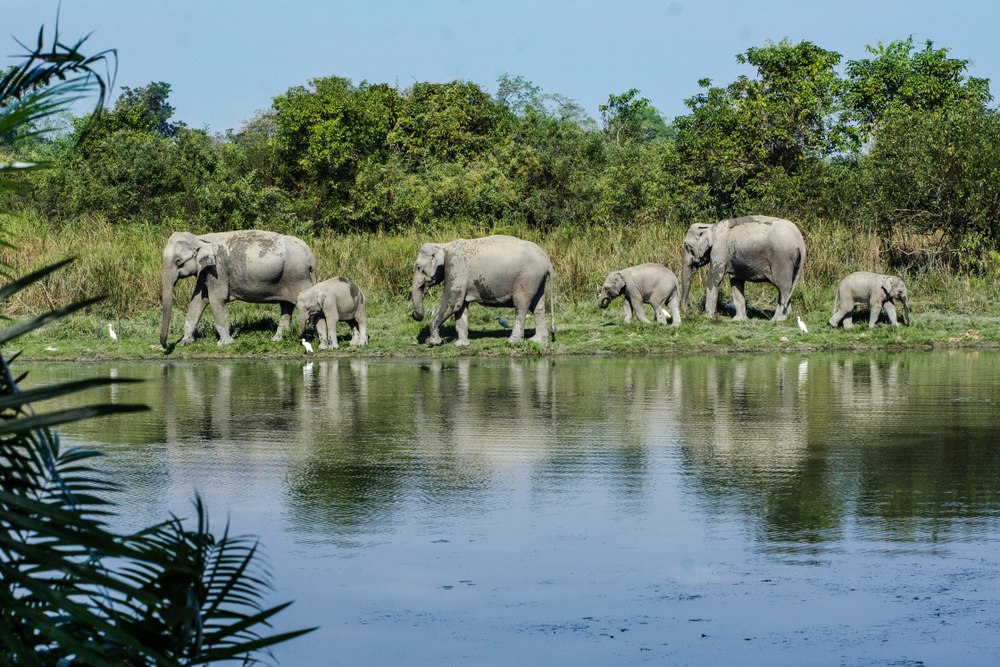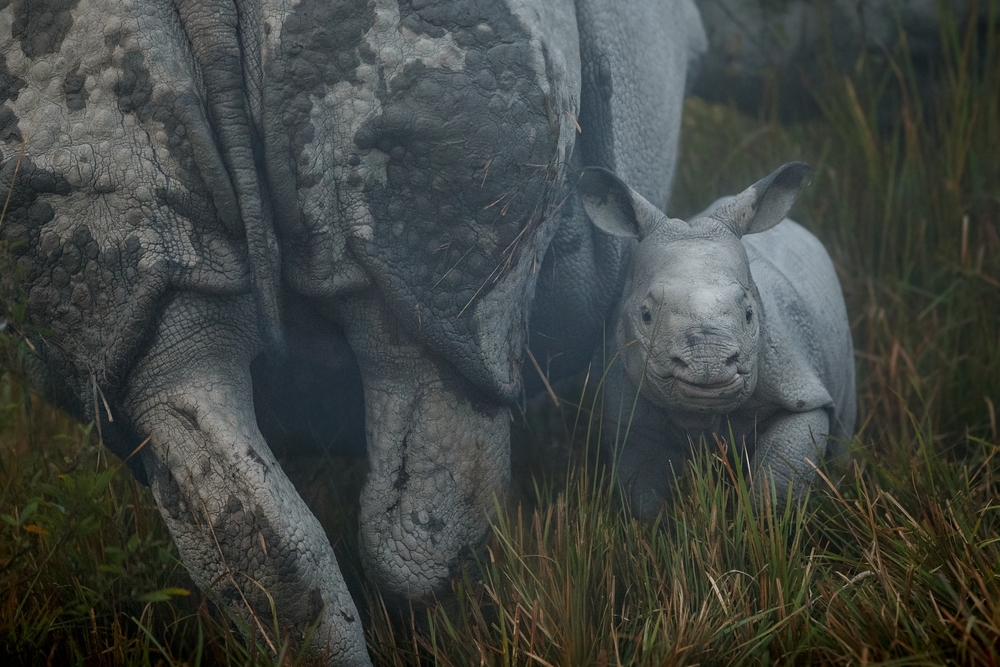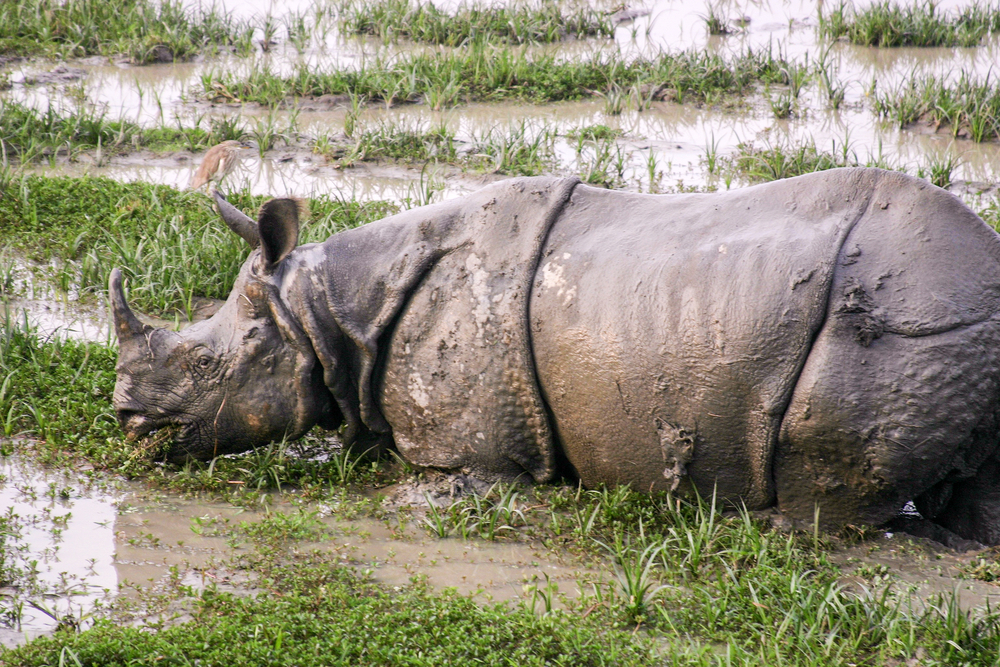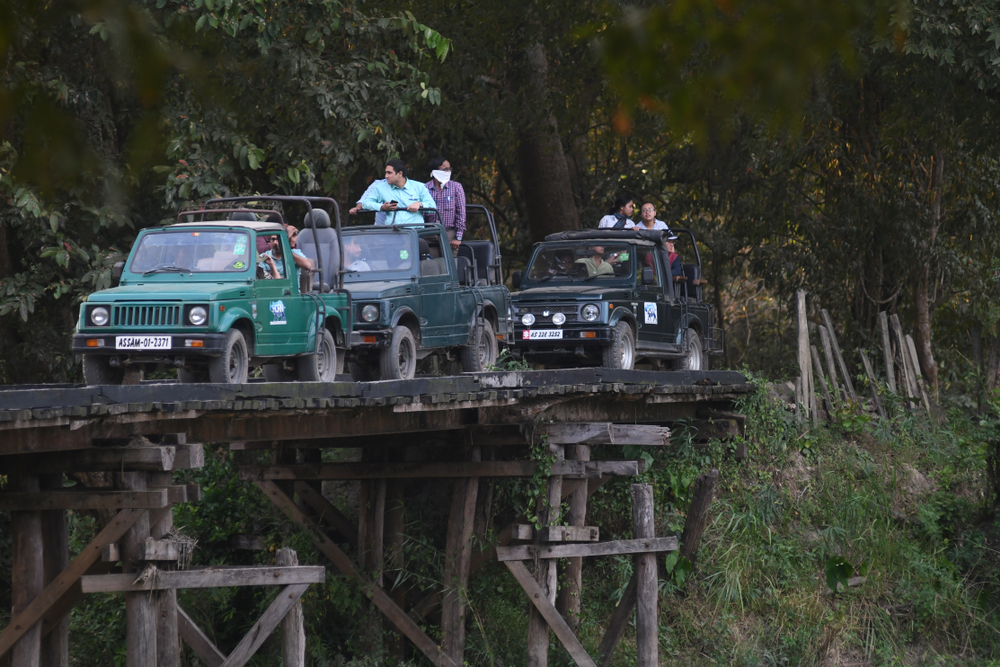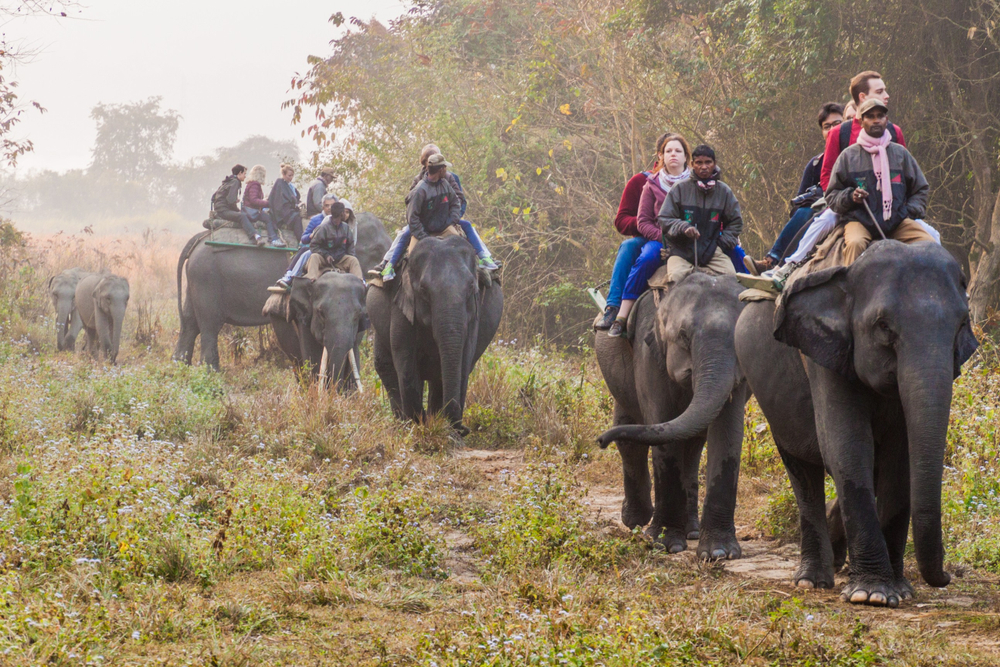Kaziranga National Park is located in the far eastern finger of India situated in the state of Assam. It sits southeast of Bhutan and northeast of Bangladesh. The national park encompasses an area of 170 square miles (430 sq km).
The park extends 25 miles (40 km) across east to west with the tallest point reaching across north and south a distance of 8 miles (13 km). The elevation fluctuates from 131 feet (40 m) to 262 feet (80 m). It is one of the largest protected areas in all of the sub-Himalayan belt and is highly recognized for its biodiversity.
The landscape of the national park is comprised of four rivers that flow throughout the park’s tall elephant grass, marshland, and tropical broadleaf forests. The Brahmaputra River is the most significant body of water which also serves as the northern border of the park.
Alluvial inundated grasslands, alluvial savanna woodlands, tropical most mixed deciduous forests, and tropical semi-evergreen forests are the four primary types of vegetation. The tall grasses account for over 40% of the vegetation with open jungle accounting for 29%. Short grasses, swamps, sand, and bodies of water account for the remaining part of the landscape.
This eclectic biodiversity of vegetation and habitat zones creates a perfect place for an equally diverse population of wildlife. The tiger is king of this park which is home to the largest population of tigers in any protected area around the world. The park accounts for 1 in 5 of all the tigers in the world. It is also home to the largest population of water buffalo and accounts for about 55% of all of the water buffalos in the world.
Additionally, there are over 1,800 individual rhinos found within the park boundaries which is the world’s largest population. The tiger and rhino combine with the elephant, water buffalo, and swamp deer to create what is known as the Kaziranga “Big 5.” Fifteen of the 35 mammalian species within the park are identified as threatened species on the IUCN Red List.
Wildlife is the appeal and draw of the park. Other popular predators include fishing cat, leopard cat, jungle cat, hog badger, golden jackal, Indian mongooses, and Bengal fox. Other popular wildlife includes wild boar, hog deer, golden langur, hoolock gibbon, Assamese macaque, sloth bear, Chinese pangolin. We don’t want to forget the rive which is home to the endangered Ganges dolphin.
Bird watchers are also in their haven with an abundance of species from migratory birds, predator birds, waterfowl, scavenger birds, and game birds. The varied ecosystems provide plenty of opportunities for experiencing numerous types of bird species. It is recognized as an “Important Bird Area” by the organization Birdlife International.
Kaziranga is home to the reticulated python and the rock python which are two of the world’s largest snakes. It is also home to the king cobra which is the world’s longest venomous snake. Turtles, monitor lizards, and other vipers and cobras are also found within the park.
Photos
Things to See
Things To Do
Kaziranga features a wonderful collection of animal species that roam throughout the striking landscape. Seeing tiger, elephant, and rhino sit atop most wildlife viewing wishlists. Here are ways you can experience the wildlife.
Kaziranga National Park Trails
There are no trails in Kaziranga National Park. The tigers and other predators make hiking a forbidden activity within the national park boundaries.
Sources
- Kaziranga National Park, Park site, https://www.kaziranga-national-park.com/, retrieved March 2020.
- Kaziranga National Park, Park site, https://www.kaziranganationalpark-india.com/, retrieved March 2020.
- Tour my India, Kaziranga National Park, https://www.tourmyindia.com/wildlife_sancturies/kaziranga-national-park.html, retrieved March 2020.
- Travelogy India, Kaziranga National Park, https://www.travelogyindia.com/wildlife-tours/national-park/kaziranga-national-park.html, retrieved March 2020.
- UNESCO, Kaziranga National Park, https://whc.unesco.org/en/list/337/, retrieved March 2020.



